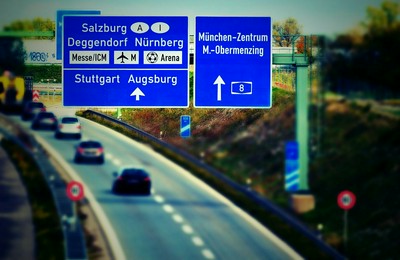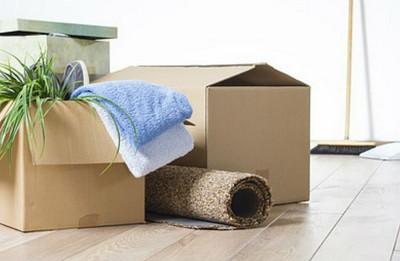What are income-related expenses (Werbungskosten)?
Expenses incurred from your profession can be claimed in full on your tax return as income-related expenses (Werbungskosten). Here, we’ll explain what exactly you can deduct and how!
What counts as income-related expenses?
Income-related expenses are defined as expenses that are incurred for the purpose of performing your profession. In German tax law, they are defined as follows:
Income-related expenses are incurred to acquire, secure, and maintain income. (§ 9 EStG)
This can include your daily commute to work, application costs, business trips, training or further education, the cost for work clothes, professional insurance, and much, much more.
If you are self-employed, income-related expenses can also be referred to as business expenses (Betriebsausgaben) and can also be deducted in full.
What is the income-related expenses lump sum?
When you file a tax return, the tax office (Finanzamt) automatically deducts a lump sum for income-related expenses from your income, this is called the income-related expenses lump sum (Werbungskostenpauschale/Arbeitnehmer-Pauschbetrag). This reduces both your taxable income and your resulting tax burden. Up until (and including) the 2021 tax year, this lump sum amounted to 1,000 euros. In 2022, it was increased to 1,200 euros per year and from 2023 onwards, it will amount to 1,230 euros.
It is not required to provide proof to receive this lump sum. Even if your income-related expenses didn’t reach the full amount or you did not work the entire calendar year, it will still be fully taken into account if you file your tax return. On the other hand, if your income-related expenses exceed the lump sum, the excess costs can be deducted by claiming and proving them individually on your return.
You can learn more about the income-related expenses lump sum in our article.
Common Income-Related Expenses

Commuter Costs
You can claim 30 cents for each kilometer traveled to or from work. From the 21st kilometer onwards of one-way travel, the commuter allowance (Entfernungspauschale) is increased to 38 cents.

Work equipment
The acquisition costs of your work equipment are fully tax-deductible. This can include laptops, phones, briefcases, office materials, and more.

Insurance
Insurance contributions that cover any professional risks (i.e. professional liability or accident insurance) can be deducted as income-related expenses.

Moves
If you moved for professional reasons, the expenses can be completely deducted on your tax return. You can take advantage of the moving allowance (Umzugskostenpauschale) to claim specific costs without providing receipts.
Commuter costs
Commuter costs for business trips, work commutes, trips to job interviews, etc., can all be claimed as income-related expenses on your tax return. You can take advantage of various lump sums such as the commuter allowance & kilometer lump sum and sometimes even deduct the actual costs of your expenses.
Claiming your work commutes: The commuter allowance
You can claim a commuter allowance of 30 cents per kilometer for your commutes between your home and primary workplace. From 2021 onwards, long-distance commuters can claim an even higher allowance from the 21st kilometer of one-way travel onwards: for the 2021 tax year, 35 cents can be claimed while from 2022 to 2026, 38 cents can be claimed. One way to or from work can be claimed per work day, regardless of means of transportation. A maximum of 4,500 euros per year can be claimed with the commuter allowance.
Exception: Those who commute with their own car or a company car can claim more than the maximum amount of 4,500 euros for the allowance. This applies to family trips home as well in the case of double household management (doppelte Haushaltsführung).
If the commuter expenses exceed 4,500 euros, they can be deducted in full provided that proof is given. Proof can be provided by showing fuel receipt and/or train tickets.
Business trips & External activities
Many employees go on business trips to travel to customers, trade fairs, seminars, other company branches, and more. For such trips, you can claim the kilometer lump sum (Kilometerpauschale) of 30 cents per kilometer traveled. If you traveled with a motorcycle, mofa, or moped, you can claim 20 cents per kilometer. Unlike the commuter allowance, both the outward and return journeys can be claimed.
If you traveled with public transportation for your business trip or external activities (Auswärtstätigkeit), you can also claim these expenses in full by hanging onto your tickets proving the costs. You should also provide proof of any overnight expenses incurred from your business trips as they are fully deductible. Learn more about business trip costs in our article here.
Note: If your employer reimbursed part of the costs for your business trip, you’re required to state so in your tax return. Alternatively, you can simply declare the costs you paid for yourself.
Allowance for Room & Board (Verpflegungsmehraufwand)
If you’re absent from your primary workplace for at least 8 hours for professional reasons, you could be entitled to compensation. Assuming your employer hasn’t covered the costs, you could claim a room & board lump sum (Verpflegungspauschale) of 14 euros. If this absence amounts to a full 24-hour day, the lump sum amounts to 28 euros per day. If your trip lasts several days, the lump sum for arrival and departure days amounts to 14 euros. For example: If an employee leaves for a business trip to Hamburg at 7pm on a Monday evening, spends the entirety of Tuesday and Wednesday there and returns home Thursday at 7am, they’ll receive 14 euros for Monday and Thursday and 28 euros for Tuesday and Wednesday, totaling up to 84 euros.
Note: The allowance can be greatly increased for business trips abroad depending on the destination country. You can find a list of the foreign country allowances here, valid from January 1st, 2023 (only in German).
Work equipment
Work equipment (Arbeitsmittel) used primarily for professional reasons can be fully claimed as income-related expenses. Work equipment totaling up to less than 952 euros (including sales tax) can be claimed in full immediately, while more expensive purchases can be written off over the course of several years. Only the costs that haven’t been reimbursed by your employer can be claimed.
Typical work equipment includes:
- PCs and laptops
- Smartphones and telephones
- Uniforms, official clothing, safety clothing, safety shoes
- Briefcases or backpacks for business trips
- Software
- Technical literature
- Tools
Note: The useful life (Nutzungsdauer) of PCs, laptops, and software was reduced from three years to one year as of January 1st, 2021. This means that you can write off computers that cost more than 952 euros all at once.
Professional moves
Expenses for job-related relocations are fully tax deductible. These expenses can include travel expenses, moving company costs, brokerage fees, or even double rent payments.
There is also a lump sum for other moving expenses (Pauschale für sonstige Umzugskosten). “Other moving expenses" include cosmetic repairs in your previous home, re-registration fees for your ID card, costs for a new telephone and internet connection, and more. It’s absolutely worthwhile to apply for this flat rate, as even if your actual costs are lower, you will still receive the allowance in full. As of April 1st, 2022, this amounts to 886 euros for the eligible person as well as an additional 590 euros for each household member who moved with them.
Double household management
If you manage two households for professional reasons (doppelte Haushaltsführung), you can claim many of the costs for your second home on your tax return. This can include:
- Rent & utility costs
- Secondary residence tax (Zweitwohnsitzsteuer)
- Furniture & fixtures
- Commutes between your primary and secondary residence
- Moving costs (The allowance for “other moving costs” cannot be claimed in the case of double household management. Therefore, it’s extremely important to hang on to your receipts and invoices for moving expenses.)
You can apply to be exempt from the broadcasting fee (Rundfunkbeitrag) for your second residence.
Requirements to be eligible for double household management
- You have your second residence for professional reasons. This can also include a room in a shared flat.
- Your workplace can be reached at least 30 minutes faster from your second residence than your primary residence.
- You must live in your primary residence and contribute to at least 10 percent of the costs.
- Your primary residence must continue to be the where your “life core” takes place. For example, it is where your family and friends live.
Contributions to professional associations and trade unions
You can deduct your contributions to professional associations (Berufsverbände) and trade unions (Gewerkschaften) in full.
Professional insurances
Insurance policies that cover professional risks can be claimed as income-related expenses. This can include professional liability insurance (Berufshaftpflicht), accident insurance (Unfallversicherung), legal costs insurance (Rechtsschutzversicherung) that covers labor law, and more.
Insurance that cover private risks (health insurance, nursing care insurance, liability insurance, etc.) cannot be claimed as income-related expenses but instead as special expenses (Sonderausgaben).
Working from home & Offices
Employees can take advantage of the Home Office Lump Sum (Homeoffice-Pauschale), introduced in 2020, to claim 5 euros per day spent working from home, up to a maximum of 600 euros per year (120 days per year). This lump sum was introduced due to the Corona pandemic to help assist those working from home who don’t have a fiscally recognized home office.
Those with offices in their home (häusliches Arbeitszimmer) can claim the costs either in full or with a limit of 1,250 euros per year (valid through 2022) depending on their individual circumstances. Learn more about that in our article on home offices.
Updates on the Home Office Lump Sum
As of 2023, the Home Office Lump Sum has been both increased and extended indefinitely. You can now claim 6 euros per day spent working from home with a maximum of 1,260 euros per year (210 days/year). The requirements for claiming an office in your home have also been simplified: If the core of your professional activity takes place in the room, you can deduct the expenses in full or claim a lump sum of 1,260 euros.
As of 2023, employees using their home office part-time due to not having a workplace available to them for certain tasks can also claim up to 1,260 euros per year for days spent working at both their company workplace as well as their office in their home.
Telephone & Internet costs
If you use your telephone or internet for professional reasons, you can deduct the costs from your taxes on a pro rata basis. If you can’t provide individual proof, tax offices will generally grant a flat rate of 20% of the costs, up to a maximum of 20 euros per month and 240 euros per year. If you use your phone almost primarily for professional reasons, you can claim more of the costs provided you prove how often your phone was used for professional reasons over a three month period. The result of these three months is then applied to the entire calendar year.
Tip: When providing proof for your telephone costs, you should choose three months where your workload is at its highest. For example, if you work less in December due to the holidays, it’d be unwise to include this month when providing invoices. If you were on vacation for most of August, you shouldn’t provide invoices for the time period of June to August.